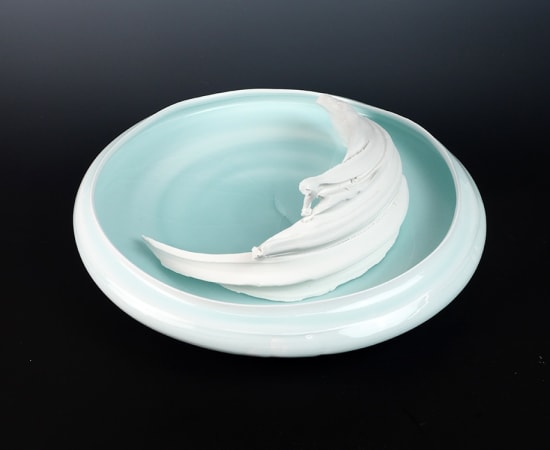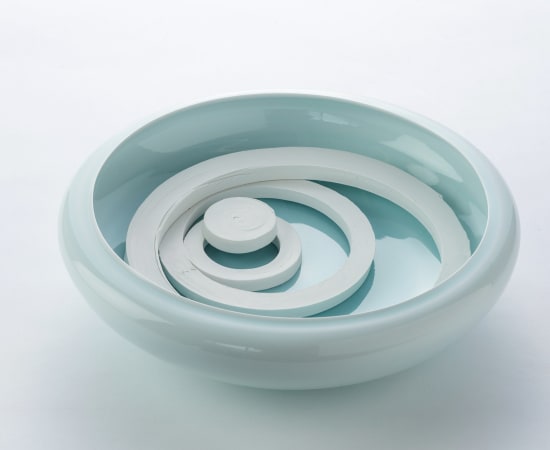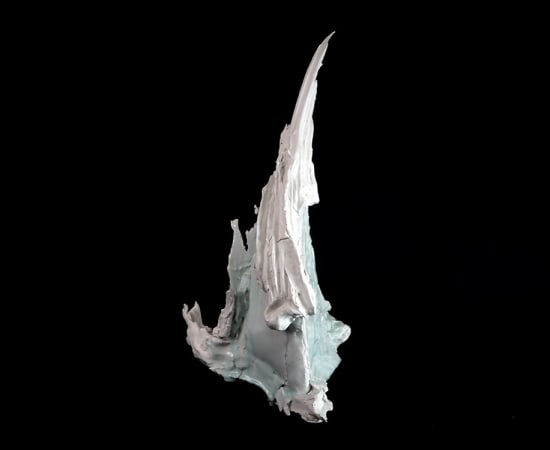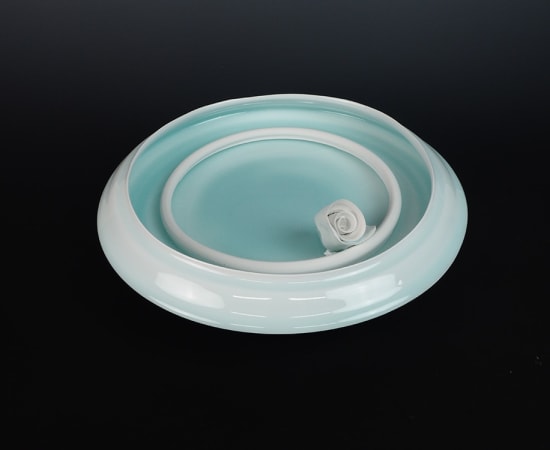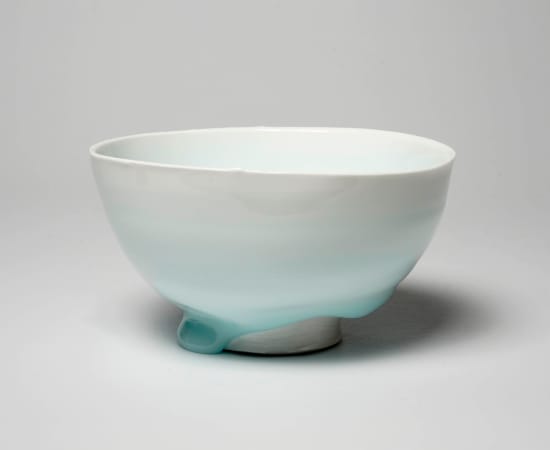Porcelain is invariably associated with the Chinese porcelain aesthetic: refined, delicate, serene, elegant, tranquil, in short, perfect. The work of Kato Tsubusa in white porcelain with subtle pale blue celadon glazing, is no less beautiful than traditional porcelain, but much different. Kato’s porcelain sculpture manifests motion, not serenity, adventurous form, not luxurious elegance; it is dramatically sweeping, not refined stillness. A few of his pieces can be put to actual use - - provided one is willing to risk the razor sharp edges and daunting fragility of his "vases" and "platters." Starting from age 21, he has worked exclusively with white porcelain clay.
Kato Tsubusa accepts the challenge of working with clay in its most difficult, fragile form: long strips of clay supported at only one end. The long, vibrant strips of clay resemble calligraphic strokes. Serrated edges as a hallmark of his sculptural works also recall glacial forms, recalling the character of translucent minerals through an opaque material. In doing so, Kato embodies the versaltility of clay.
